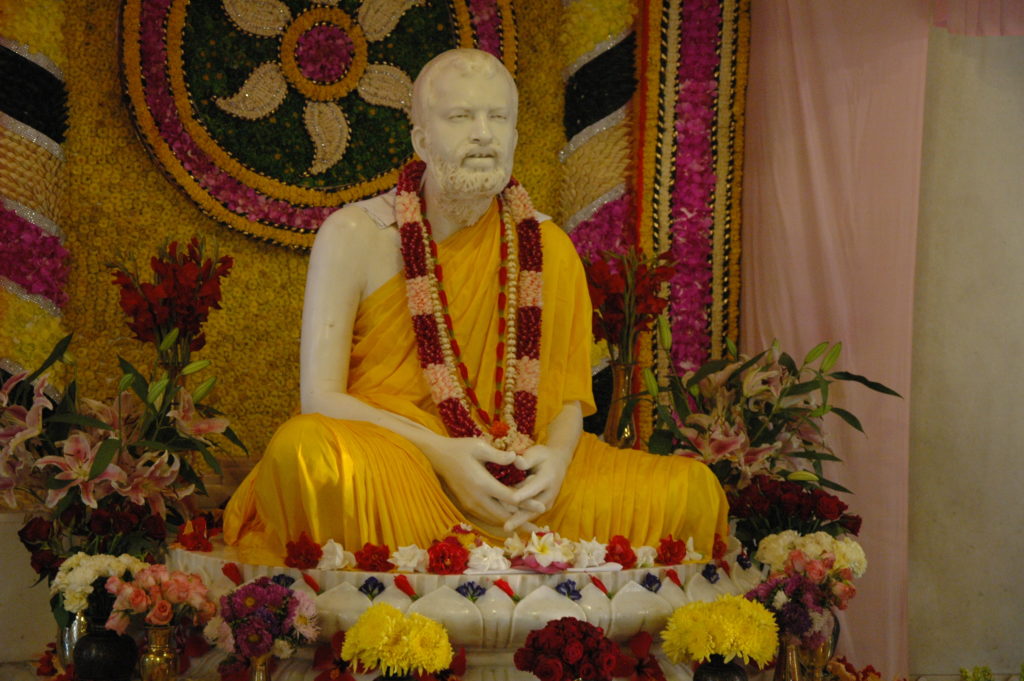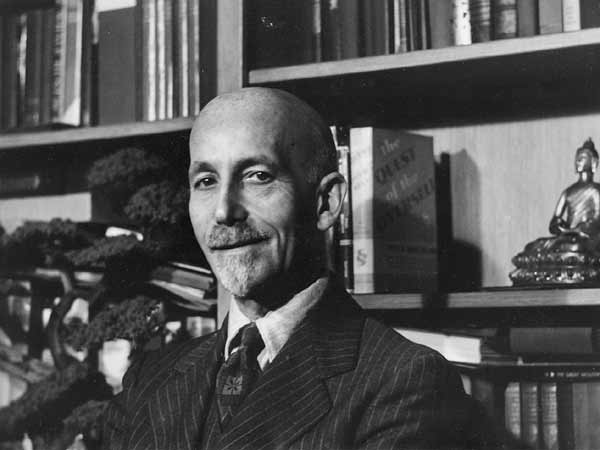(Continued from previous issue. . .)
It was 28 July 1885 and Sri Ramakrishna was in Calcutta (now Kolkata). He visited Nanda Bose to see the paintings of gods and goddesses in his house, and from there went to the widowed devotee Golap-ma’s house, and finally came to the house of another devotee Yogin-ma.
Yogin-ma lived in her parental home at 59/B/1 Baghbazar Street, which was just a few buildings away from Golap-ma’s house.
Who is Yogin-ma?
Referring to Yogin-ma, Holy Mother Sri Sarada Devi would say, “Yogin is my Jaya [an attendant of the goddess Durga]—my friend, companion, and attendant.”1 Yogin-ma practised great austerities first at her parental home, and then at Vrindavan, and at Nilambar Babu’s Garden house near Belur Math in the company of Holy Mother. Her purushakara or self-effort and the grace of Sri Ramakrishna and Holy Mother transformed her into a great spiritual figure.
Family life of Yogin-ma
Yogindra Mohini Mitra, known as Yogin-ma for short in Ramakrishna circles, was born on 16 January 1851, at Baghbazar in North Calcutta. Her father Prasanna Kumar Mitra, was a wellknown physician and specialist in midwifery who lectured at Calcutta Medical College.
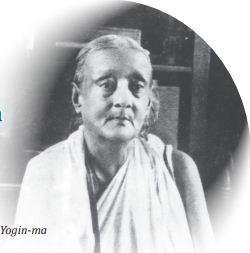
When Yogin-ma was seven, she was married to Ambika Charan Biswas, the adopted son of a rich and prominent family of Khardah, a village twelve miles north of Calcutta. When she reached the age of maturity she went to live with her husband, only to find that he was a drunkard and a libertine. He also squandered away his wealth by lavishly spending on immoral activities. Her hopes of a happy family life shattered, Yogin-ma returned to her parental home with her only daughter Ganu.2
Normally, the sad fate of such unfortunate young brides would be either to endure a miserable life living with their husband’s family or to return to their parental home. In either event, they would be unfairly stigmatised by society. However, as we see in the life of Yoginma, it is different for sincere spiritual aspirants. In this case, Sri Ramakrishna gave Yogin-ma’s mind a godward turn so that, rather than wallowing in frustration and life-long depression, she could re-direct the energies of her mind towards God-realisation.
Meetings with Sri Ramakrishna
Yogin-ma’s life took an upward turn when she came into contact with Sri Ramakrishna. She met Sri Ramakrishna for the first time at at the house of Balaram Basu, her husband’s maternal uncle and a great house-holder devotee of Sri Ramakrishna. During that meeting, she was alarmed to see Sri Ramakrishna in an intoxicated state. She was unable to distinguish between his divine intoxication and the worldly intoxication she had seen in her alcoholic husband. However, her misgivings were cleared when she began to visit Sri Ramakrishna at Dakshineswar. Her life of misery took a Godward turn. Describing this transformation, she later said: “Gradually I began to feel an attraction for the Master. Just the thought of visiting him would make my mind dance with joy. On the day that I planned to go there I would get up early and finish my household duties as quickly as possible. After arriving at his room, I would forget everything sitting in his presence. The Master used to experience samadhi off and on, and we would look at his face with wonder. …When I returned home after my visit with the Master, I would spend the whole week in an intoxicated mood. …I cannot express the joy I felt. Even while I was engaged in cooking or other household duties, my mind was with the Master. After some days, when I would feel my intoxication diminishing, my mind would again long to see him.”3
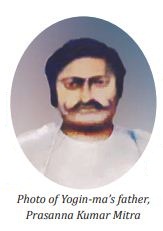
Once, exasperated by her worldly problems, Yogin-ma set out early in the morning to pour out her sufferings at Sri Ramakrishna’s feet. She walked the whole distance of 9.3 kilo meters to Dakshineswar. But amazingly, all her agonies vanished as soon as she met Sri Ramakrishna. After a while she plucked some flowers from the garden and collected them in the apron of her sari. Noticing her as she passed by, Sri Ramakrishna gently asked her, “What are you carrying?” She showed him the flowers and then approaching him offered them at his feet. Touched by this simple act of devotion Sri Ramakrishna’s mind went into an ecstatic state and in that mood, he blessed her placing his feet on her head.4
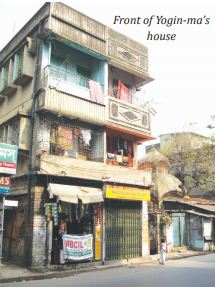
Sri Ramakrishna’s instructions
On one occasion, when the Master was returning from Balaram’s house to Dakshineswar, Yogin-ma was on the boat with him. She asked him, “I want to call on God more and put my mind wholly on him, but it is hard to control the mind. What shall I do?” Sri Ramakrishna replied, “Why don’t you surrender to him? Be like a cast-off leaf in the wind. The cast-off leaf lies on the ground and flies away as the wind carries it. Similarly, one should depend on God. Let the mind move as the power of divine consciousness moves it.”5
During this time, on 15 November 1882, Balaram Bose brought Yogin-ma’s husband Ambika Charan to his house to meet Sri Ramakrishna and receive his blessings. After he left, Sri Ramakrishna commented: “He is an unfortunate wretch. A householder has his duties to discharge, his debts to pay to his wife and children. If a wife is chaste, then her husband should support her; he should also bring up their children until they are of age.”6 Yogin-ma did not give up on her husband. She persuaded him to associate with Sri Ramakrishna. So, he met Sri Ramakrishna once again, this time at Dakshineswar. This meeting seemed to make a deep impression on him. Unfortunately, not long after this he was bitten by a rabid dog and became bedridden with rabies. When Sri Ramakrishna heard about it he told Yogin-ma to take care of him. He said that as a wife she had a duty towards her husband, even if he had been immoral. Accordingly, Yogin-ma brought her husband to her parental home during his last days and carefully nursed him until his death from rabies. Pleased with Yogin-ma’s devotion, Sri Ramakrishna decided to visit her house.7
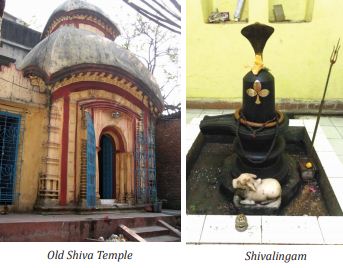
As one enters the outer courtyard of Yogin-ma’s house, on the right there is an old Shiva temple built by Yogin-ma’s father when he had first moved into the house. A few steps ahead on the left is the drawing room.
On his arrival, Sri Ramakrishna was seated in this drawing room. The room was used by a concert party. Young men of this group intermittently played on their instruments to entertain Sri Ramakrishna. The people of the locality, young and old, came thronging to see Sri Ramakrishna. Some boys from the neighbourhood stood peeping through the windows.
Seeing those boys climbing the windows, one of the devotees known as the ‘younger Naren’ told them: “Why are you here? Get away! Go home!” But Sri Ramakrishna tenderly forbade him, “Let them stay.” Every now and then he chanted: “Hari Om! Hari Om!”
The floor of the drawing room was covered with a carpet, and a young boy sang songs to Krishna: “O Kesava, bestow Thy grace / Upon Thy luckless servants here! / O Kesava, who dost delight / To roam Vrindavan’s glades and groves! . . .
Sri Ramakrishna commented: “Ah, how sweet the music is! How melodious the violin is! How good the accompaniments are! (pointing to a boy) He and the flutist seem to be a nice pair.”
The orchestra went on playing. After it was over, Sri Ramakrishna said joyfully, “It is very fine indeed.” Pointing to a young man, he said, “He seems to know how to play every instrument.” He said to M., “They are all good people.”
A few minutes later Golap-ma, who had also come to Yogin-ma’s house, asked Sri Ramakrishna to come inside for refreshments. When he asked, “Why not bring them here?”, she replied, “Ganu’s mother (Yogin-ma) requests you to bless the room with the dust of your feet. Then the room will be turned into Varanasi, and anyone dying in it will have no trouble hereafter.” Sri Ramakrishna obliged and went inside.
The power of Sri Ramakrishna visit
This visit by the avatara surcharged the house with spiritual vibrations. And Yogin-ma benefitted from it by the strength of her sincere, steadfast sadhana. In her room, which was sanctified by Sri Ramakrishna, Yogin-ma installed a shrine where she worshipped two small murtis of Bala Gopala or baby Krishna. Every day she performed ritualistic worship with great devotion. Today these murtis are worshipped in a small shrine room located next to the old Shiva temple on the ground floor. Yogin-ma had many divine visions. Describing them she said, “One day, while meditating at the time of worship, I saw two incomparably handsome boys. They came, smiling and hugging me and stroking my back, and said, ‘Do you know who we are?’ I replied: ‘Yes I know you are the heroic Balarama, and you are Sri Krishna.’8 Again, speaking of another spiritual experience at her home, Yogin-ma told, “Once I was in such a high spiritual attitude that wherever I turned my eyes, I would see my Chosen Deity. That state lasted for three days.”9
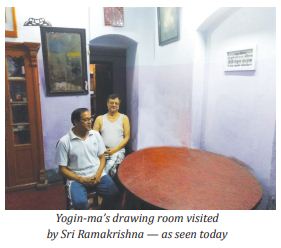
Swami Vivekananda, upon returning to India from the West and learning about Yoginma’s experiencing samadhi at her parental home, told her, “Yogin-ma, you will pass away in samadhi. Once a person experiences samadhi, the memory of it is revived at the time of death.”10
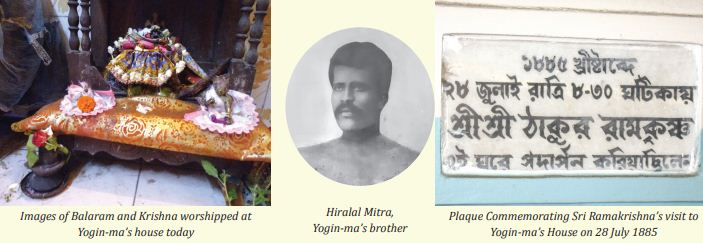
In fact, Yogin-ma reached such a high state of spirituality that even the Holy Mother Sri Sarada Devi sought her judgment and counsel.
Other notable incidents
Yogin-ma celebrated Jagaddhatri Puja at her parental home. If Holy Mother happened to be in Calcutta at that time, she would visit Yogin-ma’s house and attend the puja. Sarala Devi, one of Holy Mother’s attendants, writes: “Today is Jagaddhatri at Udbodhan. Yogin-ma just came and requested the Holy Mother to come to her home and grace the puja. At noon, Holy Mother and all of us went to Yogin-ma’s house. Yogin-ma was fasting without food or water. At 4 p.m., when the puja was over, Yoginma ate some prasad.”11
Swami Akhandanada describes an interesting incident that occurred on the day Sri Ramakrishna visited Yogin-ma’s house: “Yogin-ma’s brother Hiralal did not like the fact that his sister went to Dakshineswar. We heard that when Yogin-ma invited the Master to her house, Hiralal brought a famous gymnast and very large-sized wrestler named Manmatha… to frighten the Master. However, after Manmatha saw the Master and heard a few words from him, he fell at his feet and said to him, weeping, “My Lord, I am guilty. Please forgive me.”12 Sri Ramakrishna graciously invited him to visit Dakshineswar. Manmatha did so and his life was totally transformed.
Yogin-ma’s family continues to live in this house blessed by Sri Ramakrishna. On July 28th of every year, they celebrate the anniversary of Sri Ramakrishna’s visit to their house by arranging a special puja, kirtan, feast, etc. Sannyasis and devotees participate in this celebration.
(Concluded.)
References:
1) Divyagate banganari, Nilkumar Ray, p. 70
2) They Lived with God (2016), 159.
3) Ibid, p. 160- 61.
4) First Meetings with Sri Ramakrishna, p. 284
5) They Lived with God (2016), p. 164
6) The Gospel of Sri Ramakrishna, p. 156
7) They Lived with God (2016), p. 163
8) Ibid, p. 170.
9) Ibid, p. 167
10) Ibid, p. 167.
11) Matri Tirtha Parikrama, Volume 1, Nirmal Kumar Ray, translated from Bengali into English, p. 24-25
12) Ibid, p. 163
Source : Vedanta Kesari, September, 2020
